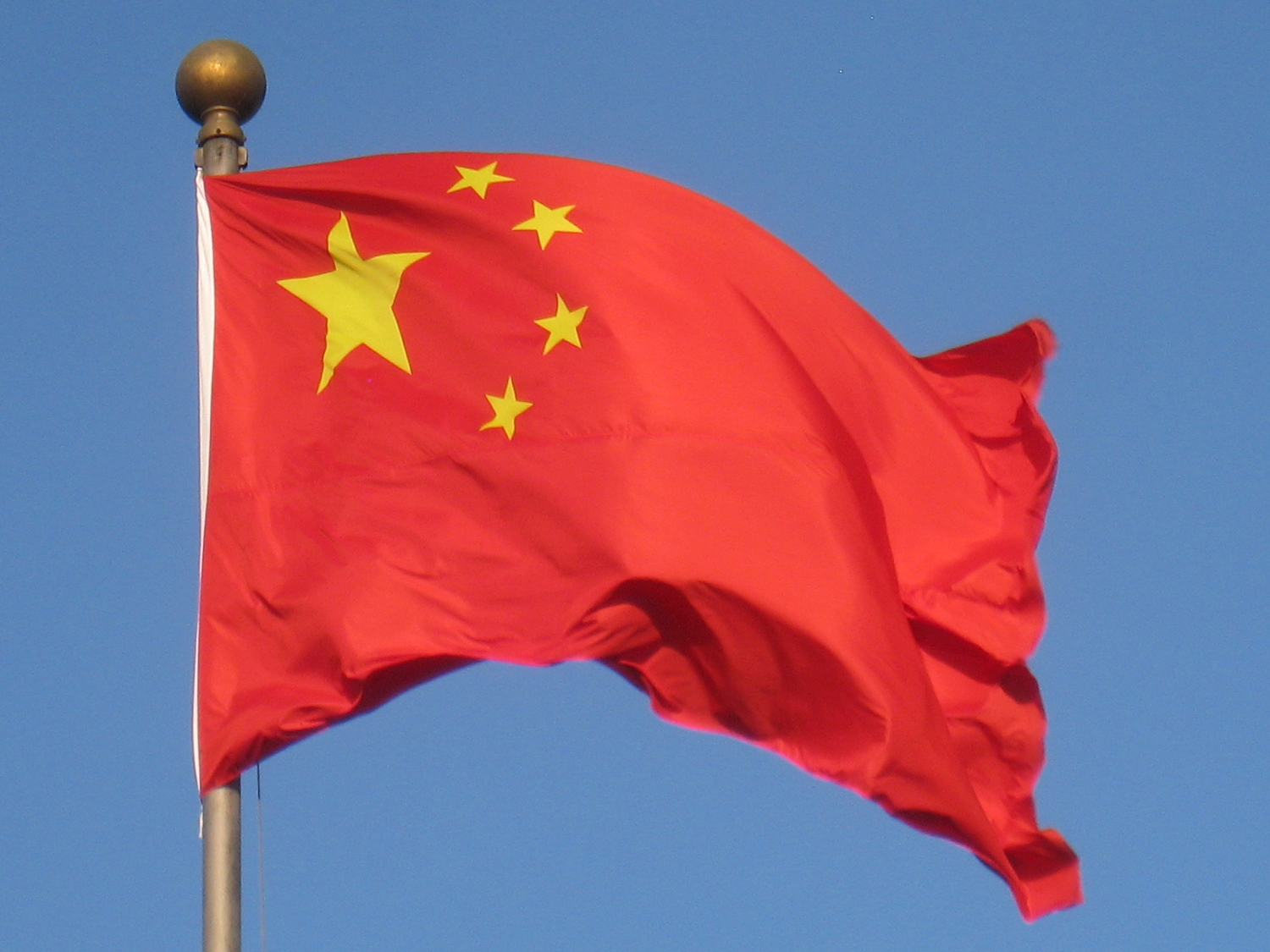Civilization
The Chinese Nuclear Arsenal: More DoD Nuclear Threat Minimization
The Department of Defense has been minimizing the threat of the nuclear arsenal that China possesses and is building by the day.

The December 2024 Department of Defense (DoD) report on China’s military capability stated that China had “…surpassed 600 operational nuclear warheads in its stockpile as of mid-2024.” Thus, this number of “operational” nuclear warheads (left undefined) was already almost six months out of date. By the time the next report would normally appear (a year later), the DoD estimate of 600+ nuclear warheads would be about 18 months out of date. Yet, China is rapidly increasing its nuclear capability. Hence, much of the media will generally repeat the increasing out-of-date Pentagon number. Even worse, the DoD number is likely to be a considerable underestimate.
China growing its nuclear arsenal
The 2022 and the 2023 editions of the DoD’s China reports, in combination, estimated that China would achieve 1,000+ “operational” nuclear warheads in May 2030 and about 1,500 in 2035. The 2023 and 2024 Pentagon reports did not update the 1,000+ warhead estimate for 2030 and provided no number for 2035. When the 2023 report was released, DoD acknowledged that the growth of Chinese nuclear capabilities was greater than previously projected yet the 2030 estimate was not revised upward. When the 2024 report was released, a senior DoD official in a background briefing on the report stated:
So, with the estimate that their stockpile contains more than 600 operational nuclear warheads as of mid 2024, it’s about 100 more than the estimate in the previous year’s report. At the risk of trying to do math without a calculator in front of me, I mean, I think we’re showing a rate of growth that is pretty well consistent with what we’ve described in reports over the past three years, a few years about their nuclear expansion and modernization.
The senior official also said that “…we think that they will continue growing their force to 2035 in line with the previous estimates that you mentioned [“around 1,500 nuclear warheads by 2035”].”
Even the DoD hasn’t figured out how fast China is moving
Unfortunately, the Chinese are increasing their forces faster than DoD estimated in 2022 and 2023. In October 2024, this author, in a National Institute for Public Policy Occasional Paper on China’s nuclear arsenal, pointed out that to estimate numbers as low as 500+ warheads in May 2023, 1,000+ warheads in 2030 and about 1,500 in 2035, China would have to reduce its nuclear warhead production rate from the 100 a year that the DoD had reported over the last several years to about 70 through 2030 returning to about 100 from 2030 to 2035. The reduction clearly did not happen in 2023 and 2024. Indeed, the 2024 DoD China report indicated that China continued warhead production at about 100 warheads a year. The Occasional Paper pointed out that, “The DoD’s assumption that China is building launchers faster than it is building missiles and building missiles much faster than warheads creates the potential for large undercounting.”
There appears to be pattern of understating the growth of Chinese nuclear weapons numbers both by commission and omission. For example, a November 2024 Defense Intelligence Agency (DIA) report did not update the May 2023 DoD numbers. This clearly was misleading.
Biden reduced America’s arsenal
The Biden Administration came into power intending to reduce U.S. nuclear weapons and, despite Russian aggression against Ukraine, some reductions were announced in the 2022 Nuclear Posture Review. Because of Russia’s invasion of Ukraine, the reductions were largely vetoed by Congress but nothing positive was done to enhance the inadequate U.S. nuclear modernization program while the U.S. nuclear deterrent continued to age. It appears that the Biden Administration did not want to admit that it was going to allow China to build a larger nuclear force than that of the United States.
To assess numbers as low as 500+ nuclear warheads in May 2023 and 600+ nuclear warheads in mid-2024, all the following dubious assumptions would have to be true:
- All or nearly all multiple warhead (MIRVed) Chinese strategic missiles would have to be deployed with one warhead.
- China would have to be building launchers faster than it is building missiles and building missiles much faster than their warheads.
- Less capable DF-31 ICBMs would “probably” have to be deployed in China’s new silos, and they are the older single warhead versions.
- China would have to have only a handful of air-delivered nuclear warheads, no nuclear-capable cruise missiles and no nuclear-capable H-6K bombers.
- China would have to lack any nuclear-capable short-range ballistic missiles.
- China would have to have only a small number of non-strategic nuclear warheads.
What China has
Most of these assumptions appear unlikely. It is even possible that they are all untrue. There is a clear analytical disconnect between the scope of Chinese nuclear delivery vehicle programs and the relatively slow DoD projected growth in Chinese nuclear warheads. Even the flawed November 2024 DIA report listed numerous Chinese strategic and theater nuclear missile systems although no numbers were given. These include:
Selected Nuclear Capable Delivery Systems
Chinese Nuclear Military Capability Inventory Air-Launched Ballistic Missile (ALBM) Deployed Hypersonic Glide Vehicles (HGVs) Deployed Intercontinental Ballistic Missiles (ICBMs) Deployed Intermediate-Range Ballistic Missiles (IRBMs) Deployed Medium-Ranged Ballistic Missiles (MRBMs) Deployed Submarine-Launched Ballistic Missiles (SLBMs) Deployed
China, at President Xi Jinping’s directive, is preparing for a war with Taiwan in 2027. An invasion of Taiwan would be very difficult, costly and uncertain. Admiral Sam Paparo, Commander of the U.S. Indo-Pacific Command, recently stated that in a war between China and Taiwan, an estimated one million people could die – whether or not the United States intervenes. China would have to be idiotic not to maximize its nuclear capability before undertaking such risks. Chinese policy as assessed by the DoD would result in maximizing near-term costs and minimizing the near-term enhancement of Chinese nuclear capability. This would be foolish.
Ballistic missiles
Concerning submarine-launched ballistic missiles, the 2024 DoD reports stated that, “The Type 096 SSBN [nuclear ballistic missile submarine] probably is intended to field MIRVed SLBMs and probably will begin construction in the mid-2020s.” Again, this appears to have been an intentional effort by the Biden Administration to put off assessing a large expansion of China’s nuclear weapons numbers due to MIRVing until well into the 2030s. The 2024 DoD report stated that China has probably deployed the new more capable JL-3 SLBM on the existing type 094 missile submarines. The 2020 edition of the National Air and Space Intelligence Center (NASIC)/DIA foreign missile threat report said that the JL-3 carried multiple nuclear warheads. (Did the Biden Administration terminate the report because the next edition is long overdue?) Press reports that China was planning to MIRV its SLBMs go back about 25 years.
In addition to Chinese MIRVing ICBMs and SLBMs, Bill Gertz reported that China’s fractional orbital bombardment system may carry multiple warheads.
Leaving out certain capabilities
The 2024 DoD report does not change the previous assessment that China has no nuclear-capable short-range missiles or cruise missiles of any range. There are a significant number of assessments that they are nuclear-capable. This is particularly true regarding Chinese cruise missiles. In 2009, NASIC said the DH-10 (the ground- and sea-launched version of CJ-20 cruise missile) was nuclear capable. In 2013, then-Commander of the U.S. Global Strike Command Lieutenant General James Kowalski said that China’s CJ-20 air-launched cruise missile was nuclear-capable. In 2013, Russian Colonel General (ret.) Viktor Yesin wrote that China’s DH-10 cruise missile was nuclear-capable. In 2021, then-Vice Chairman of the Joint Chiefs of Staff General John Hyten said China was rapidly building nuclear cruise missiles.
China likely has more
The DoD’s assessment of Chinese construction of only 100 new warheads a year is unlikely. Apparently, the 100 number comes from a more than a decades-old estimate of Chinese ability to produce fissile material pits for nuclear weapons. It makes no sense for China to increase greatly its nuclear warhead delivery capability and not make comparable increases in its nuclear weapons production capability. Except perhaps for the DF-27 IRBM/ICBM, all Chinese ICBMs and SLBMs are exclusively nuclear-armed.
In light of Chinese secrecy and its construction of thousands of underground facilities, it would be foolish to assume that it is possible to detect reliably Chinese construction of additional facilities to produce pits. There is extensive evidence that China has sufficient fissile material to produce thousands of nuclear weapons. Moreover, even the Pentagon report admits that China is increasing its fissile material production capability. China obtained a large amounts of U.S. nuclear weapons technology through espionage. Keep in mind that China has probably continued to conduct covert nuclear tests. Thus, they have the near-term potential to produce thousands of nuclear warheads.
Time to take them seriously
In June 2024, Captain (Ret.) James Fanell, former Senior Intelligence Officer for the U.S. Pacific Fleet, told Congress that, “For a generation, the IC [Intelligence Community] failed national security decision-makers, and the American people, regarding the growth of China’s capabilities and intentions,” systematically engaging in what he referred to as “threat deflation.” He noted that, “The rapid, yet still opaque growth of the PRC’s nuclear arsenal may very well exceed the U.S.’s by 2030, if not sooner. Beijing already possesses more tactical nuclear weapons and theater forces than does the U.S.”
Thus, until its last days in office, the Biden Administration attempted to minimize public and Congressional perception of how imminent the threat of Chinese numerical nuclear superiority is in reality. For ideological reasons, the Biden Administration refused to take any action to bolster the U.S. nuclear deterrent or even enhance its survivability. If one takes President Xi’s directive for readiness for a 2027 war against Taiwan seriously, there is very little time to respond to this threat. Failure to take this threat seriously will leave the United States, its Asian allies and friends unprepared for the destabilization of the Asia-Pacific theater, and, ultimately, war with the likely increased risk of Chinese nuclear escalation.
This article was originally published by RealClearDefense and made available via RealClearWire.
Dr. Mark B. Schneider is a Senior Analyst with the National Institute for Public Policy. Before his retirement from the Department of Defense Senior Executive Service, Dr. Schneider served as Principal Director for Forces Policy, Principal Director for Strategic Defense, Space and Verification Policy, Director for Strategic Arms Control Policy and Representative of the Secretary of Defense to the Nuclear Arms Control Implementation Commission. He also served in the senior Foreign Service as a Member of the State Department Policy Planning Staff.
-

 Civilization2 days ago
Civilization2 days agoDC Pipe Bomb Arrest Raises Questions About Christopher’s Wray’s FBI
-

 Civilization5 days ago
Civilization5 days agoYoo Hoo, VP Vance—Your Character is Showing!
-

 Executive5 days ago
Executive5 days agoThe Last Supper: New York’s Socialist Feast
-

 Guest Columns4 days ago
Guest Columns4 days agoCongressional Leaders See Far Higher Stock Returns Than Peers
-

 Civilization3 days ago
Civilization3 days agoThe Legal Logic Behind U.S. Operations Against Narco-Terrorist Networks
-

 Civilization5 days ago
Civilization5 days agoFacing Facts & Rolling Back Mythologies: The New National Security Strategy
-

 Civilization4 days ago
Civilization4 days agoHow Trump Changed America
-

 Executive3 days ago
Executive3 days agoNewsom’s ‘National Model’ for Homeless Wracked by Fraud













